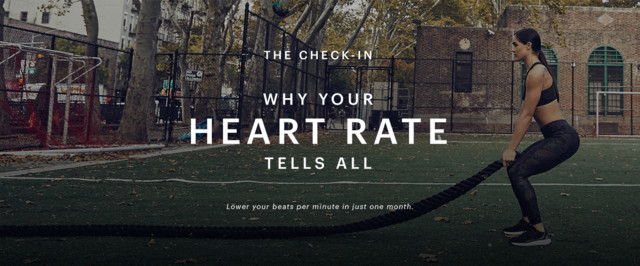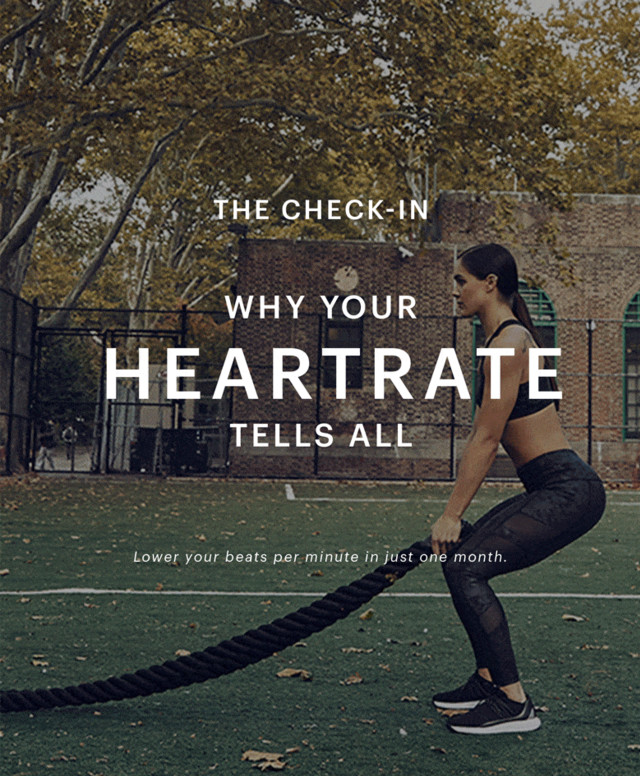
Go dry Monday through Thursday, or any other consecutive four-day period each week, which is enough to have a positive effect.
Why it works:
HRV is a measure of the variation between heartbeats and can be used to track central nervous system recovery, a sign of how well you recover post-workout, Delaney explains. Alcohol can compromise your recovery, leading to a lower HRV and an increased RHR.

Focus on your breath for one minute, five times per day. Delaney does this when he wakes up, the moment he gets to his desk, just before bed, and anytime stress arises. Try the 4-7-8 technique (breathe in for four counts, hold for seven, and breathe out for eight counts), diaphragmatic breaths, and lengthening your exhale.
Why it works:
Deep breathing helps your body go into parasympathetic mode, which is helpful for resting heart rate. This is especially important for people with busy schedules or those in high-powered jobs who may feel pressure regularly throughout the day.

Train your heart—better. How exactly you do this depends on your current workout regimen: If your routine is strength-focused, add 30 minutes of cardio three to five times per week, like Delaney did. Even if cardio is already your go-to workout, make sure to log both steady-state and interval sessions to make your heart more adaptable.
Why it works:
“You need the heart to have elasticity so the chambers can fill with blood, increasing how much is pumped to the body,” Delaney says. Cardio like running, cycling, boxing, and jumping rope promotes elasticity of the heart muscle, making it more efficient.

If you prioritize cardio, add one or two 30- to 45-minute strength sessions to your routine each week. Use heavier loads that bring you to failure in 6 to 8 reps.
Why it works:
While cardio makes the heart more elastic, strength training can improve its contractility. This allows the heart to squeeze harder and pump more blood with each beat. You need both types of training to help your heart operate at its best.

Combat dehydration by drinking water every time you sit down or stand up, Delaney says.
Why it works:
About 54% of your blood is made of plasma, which is 92% water. That means around half of your blood volume comes from H2O. When you’re dehydrated, your blood volume drops and your heart has to pump harder to circulate the blood, Delaney says.

Eat within a 12-hour (or shorter) window. Delaney chose between 10 a.m. and 7 p.m., but you can pick any period that works for you.
Why it works:
Digestion is regulated by your circadian rhythm in similar ways that sleep is. “Eating outside of a 12-hour window doesn’t give your digestive system time to recover from its actions that day,” he explains. “Plus, if you go to bed with a full stomach, your body can’t tap into a restful state because it still has to work to break down the food.” In other words, time-restricted eating can help you sleep better, which can lower your heart rate.

